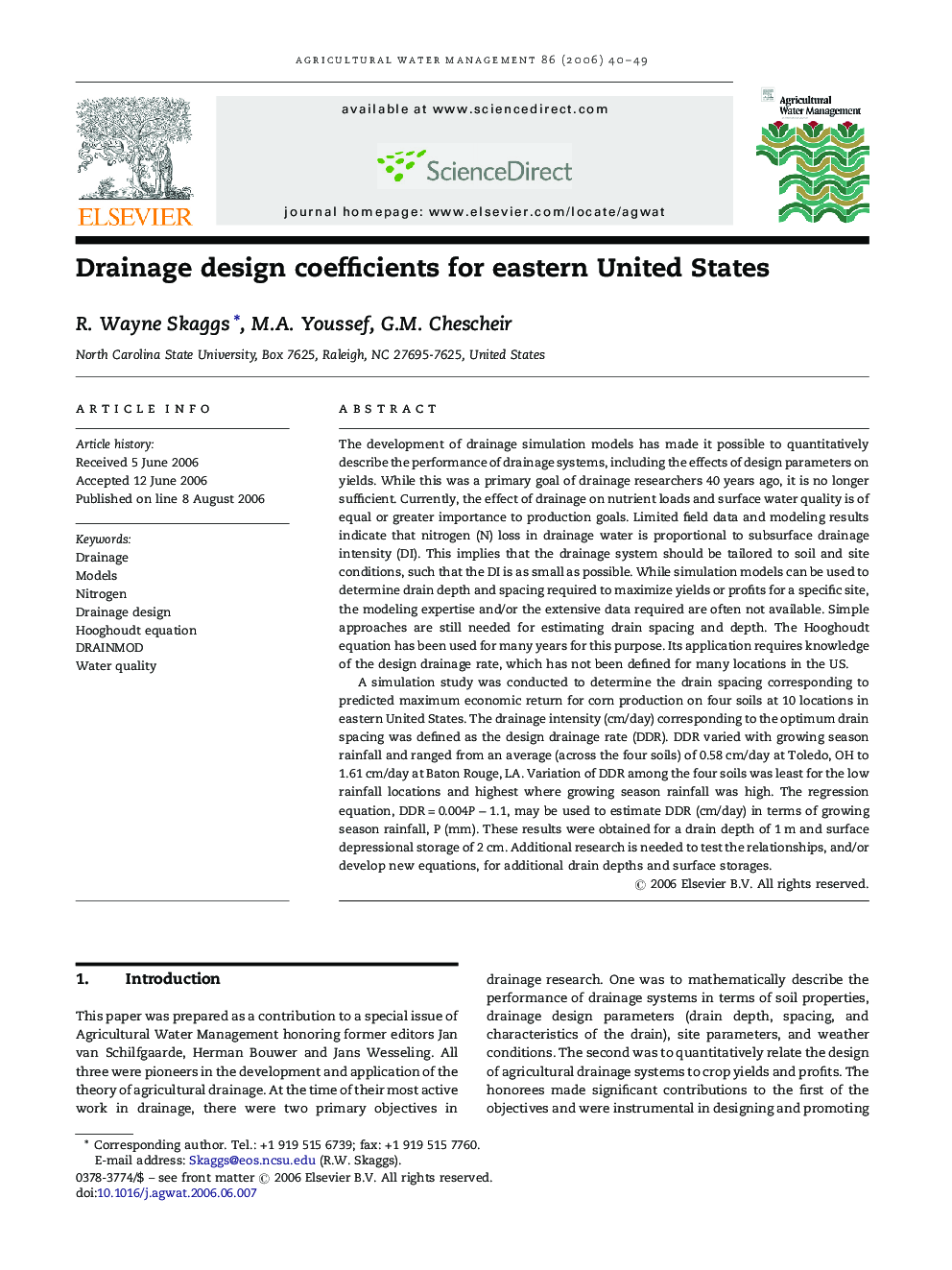| کد مقاله | کد نشریه | سال انتشار | مقاله انگلیسی | نسخه تمام متن |
|---|---|---|---|---|
| 4480133 | 1622986 | 2006 | 10 صفحه PDF | دانلود رایگان |

The development of drainage simulation models has made it possible to quantitatively describe the performance of drainage systems, including the effects of design parameters on yields. While this was a primary goal of drainage researchers 40 years ago, it is no longer sufficient. Currently, the effect of drainage on nutrient loads and surface water quality is of equal or greater importance to production goals. Limited field data and modeling results indicate that nitrogen (N) loss in drainage water is proportional to subsurface drainage intensity (DI). This implies that the drainage system should be tailored to soil and site conditions, such that the DI is as small as possible. While simulation models can be used to determine drain depth and spacing required to maximize yields or profits for a specific site, the modeling expertise and/or the extensive data required are often not available. Simple approaches are still needed for estimating drain spacing and depth. The Hooghoudt equation has been used for many years for this purpose. Its application requires knowledge of the design drainage rate, which has not been defined for many locations in the US.A simulation study was conducted to determine the drain spacing corresponding to predicted maximum economic return for corn production on four soils at 10 locations in eastern United States. The drainage intensity (cm/day) corresponding to the optimum drain spacing was defined as the design drainage rate (DDR). DDR varied with growing season rainfall and ranged from an average (across the four soils) of 0.58 cm/day at Toledo, OH to 1.61 cm/day at Baton Rouge, LA. Variation of DDR among the four soils was least for the low rainfall locations and highest where growing season rainfall was high. The regression equation, DDR = 0.004P − 1.1, may be used to estimate DDR (cm/day) in terms of growing season rainfall, P (mm). These results were obtained for a drain depth of 1 m and surface depressional storage of 2 cm. Additional research is needed to test the relationships, and/or develop new equations, for additional drain depths and surface storages.
Journal: Agricultural Water Management - Volume 86, Issues 1–2, 16 November 2006, Pages 40–49